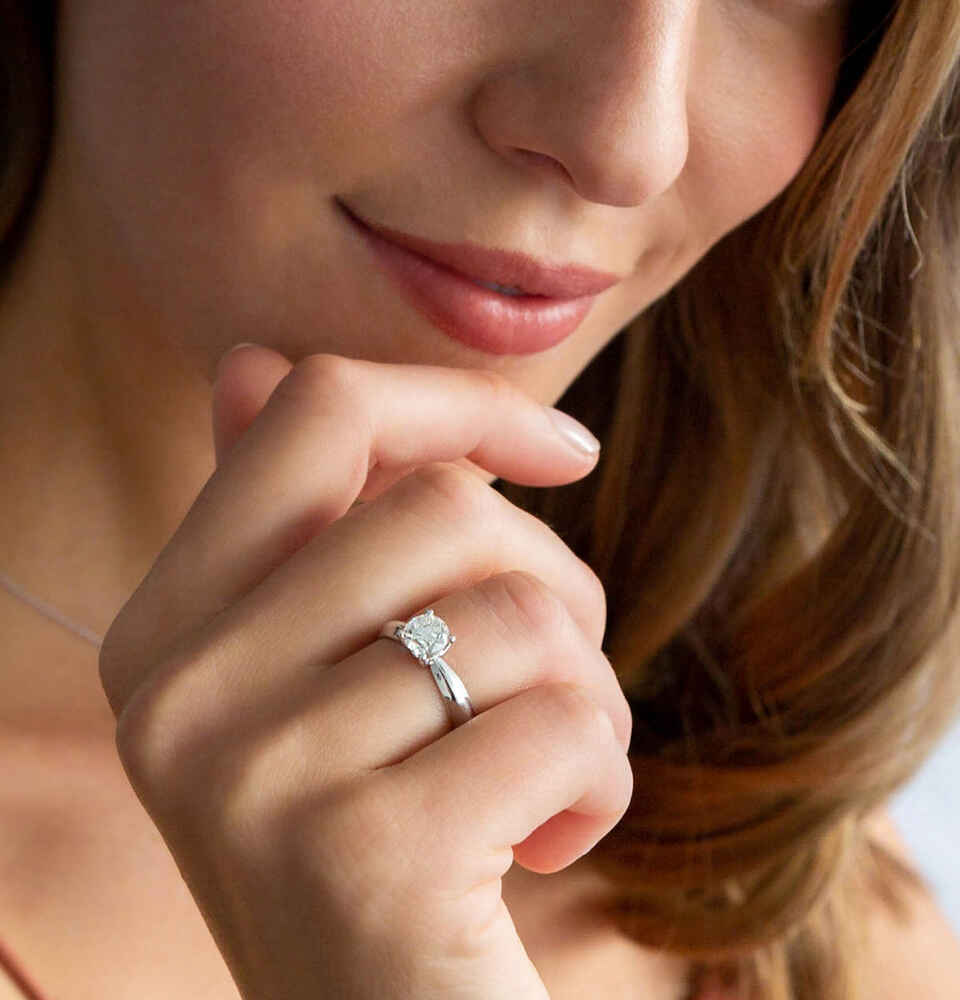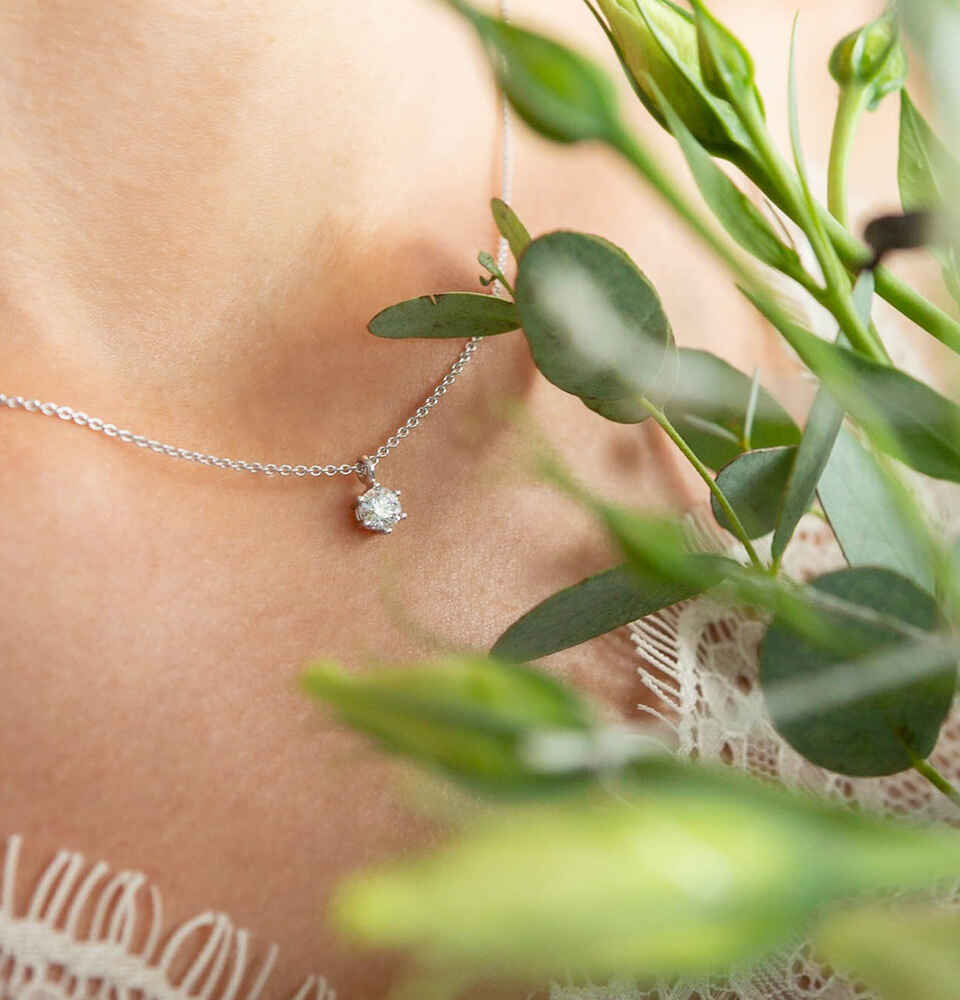Judging the quality of diamonds by the 4 C's
Diamonds, whether individually or processed in a piece of jewelry, have held their high value for centuries. As an investment, they defy all risks - from external influences to price fluctuations and inflation. This makes them an ideal means of asset protection.
If you want to buy diamonds, it is important that you can determine the quality of your investment or diamond jewelry. In our guide, we explain how to do that with the four C's.
Diamonds and other gemstones are weighed in carats. One metric carat is equal to 0.2 grams; a paper clip, for example, weighs the same.
This unit of weight is not related to the carats for gold alloys.
Just as one euro is divided into 100 cents, one carat is divided into 100 points, i.e. a diamond of 0.50 ct has 50 points.
However, the value of a diamond with 2 carats is much higher than the value of 2 diamonds that have 1 carat each.
For carats, there is no rounding: a hundredth of a carat not reached is not indicated.
The name "Karat" is derived from the Arabic or Greek name for the seeds of the carob tree (lat. Caratonia siliqua).
Since these seeds are very uniform in size, they used to be used as weights.
The modern metric carat was used in the United States starting in 1913; today, a carat weighs the same all over the world.
Most diamonds have very small natural features called "inclusions". The fewer and smaller these inclusions are, the better the light can penetrate the stone and the purer it appears.
Inclusions in diamonds were first described in the early 20th century from a commercial point of view, to distinguish the rarity of particularly "pure" diamonds without inclusions from the large quantity of stones with inclusions.
In Germany, the purity of a diamond is understood to be only the inner perfection, in the USA and Scandinavia also the outer goodness.
Cut diamonds are considered to be flawless if no inclusions are visible under tenfold magnification.
The clarity of a diamond is divided into different clarity grades.
The color of the diamond contributes to its beauty and determines the price.
Diamond crystals are usually colorless.
Diamond crystals are usually colorless.
Intensely colored diamonds (fancy diamonds) are extremely rare because the color of the diamond is determined by its few impurities, such as nitrogen, iron magnesium, silicon, and so on.
The color palette of these colored diamonds ranges from the very rare and exceptional transparent blue-white, to yellowish hue, and from faint brown to a very dark brown coloration.
A diamond with an attractive natural color is a fancy diamond. Diamonds can appear in any reddish color, such as purple, pink, olive-green, apple-green, yellow-green, cream, metallic, gold, brown, light yellow, orange-brown, blue-black, champagne, sapphire-blue and so on.
Color descriptions such as matte, extravagant light, extravagant, and extravagant intense are used to evaluate the diamond.
The brilliance and fire of a diamond are determined by how it is cut and polished.
These factors produce optimum brilliance and color decomposition.
The cut and the proportions, the so-called "finish" determine the brilliance of a diamond.
Light plays a major role here: the light rays penetrate the stone and are then reflected to the eye.
An ideally cut diamond has total reflection, i.e. the incident light is completely reflected.
If the values for the cut and proportions of the diamond are below the standard, it will affect the appearance.
Excellent brilliance. Few or only minor external features. Very good proportions
Good brilliance. Some external features. Proportions with significant deviations.
Brilliance diminished. Several major external features. Proportions with significant deviations.
Brilliance significantly reduced. Large and/or numerous external features. Proportions with very marked deviations.








